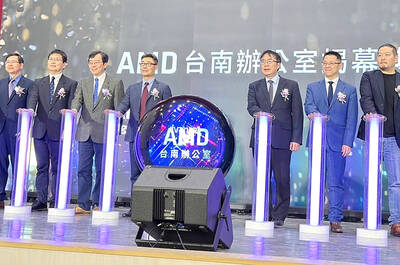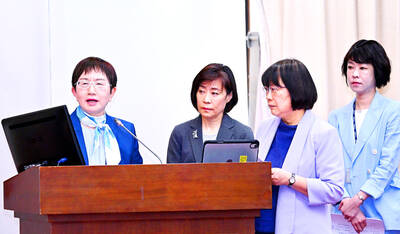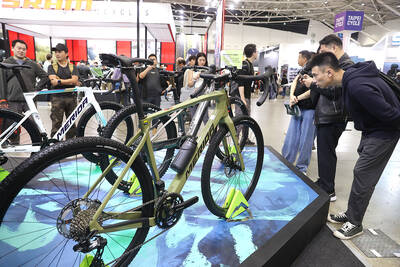EVA Airways Corp (EVA, 長榮航空) plans to phase out its Boeing 747-400 aircraft in three years as it aims to build up a newer fleet to raise safety and energy efficiency.
The nation’s second-largest carrier is planning to order more B777-series aircraft and Airbus SAS’ A321 planes, and even B787 Dreamliner jets, to replace the B747s, EVA chairman Chang Kuo-wei (張國煒) said yesterday.
“The next step for the company is fleet replacement and upgrade,” Chang told reporters after a press conference to announce its formal entry into the Star Alliance.
The average age of EVA’s fleet is eight to nine years, he said.
The airline is aiming at a fleet with 35 B777-series passenger and cargo planes, Chang said. It now has 15 B777-300ER aircraft, with another seven on order.
EVA plans to order 10 more A321-series aircraft for regional and shorter routes, moving away from the four A321-200 planes it now operates and the 14 more on order.
The fleet upgrade may take five to 10 years to complete, with B787 Dreamliner jets for long-haul routes in the long run, Chang said.
EVA will start integrating routes with its 27 peers in the Star Alliance now that it is a member.
“The move may help us save resources and raise business efficiency,” Chang said.
Instead of increasing routes, the airline will concentrate on the frequency of its higher-profitability cross-strait flights to enhance its niche and advantages in the Star Alliance, he added.

TECH CLUSTER: The US company’s new office is in the Shalun Smart Green Energy Science City, a new AI industry base and cybersecurity hub in southern Taiwan US chip designer Advanced Micro Devices Inc (AMD) yesterday launched an office in Tainan’s Gueiren District (歸仁), marking a significant milestone in the development of southern Taiwan’s artificial intelligence (AI) industry, the Tainan City Government said in a statement. AMD Taiwan general manager Vincent Chern (陳民皓) presided over the opening ceremony for the company’s new office at the Shalun Smart Green Energy Science City (沙崙智慧綠能科學城), a new AI industry base and cybersecurity hub in southern Taiwan. Facilities in the new office include an information processing center, and a research and development (R&D) center, the Tainan Economic Development Bureau said. The Ministry

ADVERSARIES: The new list includes 11 entities in China and one in Taiwan, which is a local branch of Chinese cloud computing firm Inspur Group The US added dozens of entities to a trade blacklist on Tuesday, the US Department of Commerce said, in part to disrupt Beijing’s artificial intelligence (AI) and advanced computing capabilities. The action affects 80 entities from countries including China, the United Arab Emirates and Iran, with the commerce department citing their “activities contrary to US national security and foreign policy.” Those added to the “entity list” are restricted from obtaining US items and technologies without government authorization. “We will not allow adversaries to exploit American technology to bolster their own militaries and threaten American lives,” US Secretary of Commerce Howard Lutnick said. The entities

Minister of Finance Chuang Tsui-yun (莊翠雲) yesterday told lawmakers that she “would not speculate,” but a “response plan” has been prepared in case Taiwan is targeted by US President Donald Trump’s reciprocal tariffs, which are to be announced on Wednesday next week. The Trump administration, including US Secretary of the Treasury Scott Bessent, has said that much of the proposed reciprocal tariffs would focus on the 15 countries that have the highest trade surpluses with the US. Bessent has referred to those countries as the “dirty 15,” but has not named them. Last year, Taiwan’s US$73.9 billion trade surplus with the US

The Taipei International Cycle Show (Taipei Cycle) yesterday opened at the Taipei Nangang Exhibition Center, with the event’s organizer expecting a steady recovery in the industry this year following a tough last year. This year, 980 companies from 35 countries are participating in the annual bicycle trade show, showcasing technological breakthroughs and market development trends of the bicycle industry at 3,600 booths, the Taiwan External Trade Development Council (TAITRA, 外貿協會) said in a statement. Under the theme “Ride the Revolution,” the exhibition has attracted more than 3,500 international buyers from 80 countries to preregister for the four-day event, which is expected to